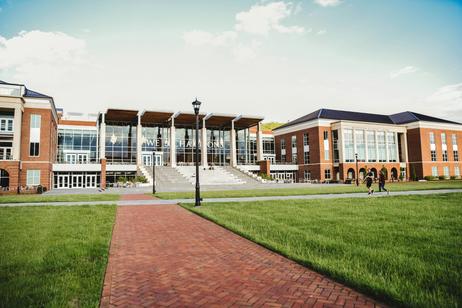The Pros and Cons of On-Campus Housing for Community College (Updated 2025)
As more community colleges explore expanding or improving on-campus housing in 2025, students, parents, and educators need a clear understanding of what living in college-operated housing truly means. For many nontraditional and traditional students alike, the decision to live on campus involves trade-offs. This article updates the pros and cons using current trends, policy changes, costs, and examples to help inform that choice.
How Common Is On-Campus Housing at Community Colleges?
Recent data show the presence of on-campus housing in community colleges is slowly growing:
About 26.6% of U.S. public two-year (community) colleges now offer college-operated, on-campus housing. That’s up from ~22.8% in 2010. Community College Daily
In many states, there are very few community colleges with dorms; some states have none. But 38 states have at least one public two-year college with housing. Community College Daily
California provides a useful example: as of 2025, a report from the California Community Colleges system shows that 16 colleges are offering student housing, accommodating over 3,800 students. cccco.edu
So while community college housing is still not the norm, it is becoming more common and more visible as part of broader student support strategies.
Pros of On-Campus Housing for Community College Students
Here are key advantages, especially relevant to 2025:
Improved Retention & Graduation Rates
Students living on campus tend to persist and complete degrees at higher rates. For example, a college with on-campus housing reported a Fall-to-Winter retention rate of 89.6% for residential students compared to 83.8% among other certificate- or degree-seeking students without housing. Diverse: Issues In Higher EducationGreater Access to Campus Resources
Housing removes or reduces commuting time and transportation barriers, giving students easier access to academic help, libraries, labs, tutoring, and other supports—often crucial for students juggling work or family responsibilities.Stronger Sense of Community and Engagement
Students living on campus generally report greater involvement in student organizations, peer support, living-learning communities, social events, and improved wellbeing. The sense of belonging can support academic success. Surveys in 2025 show students living in residence value community building and access to peers. Inside Higher EdReduced Hidden Costs
Depending on location, on-campus housing can reduce or eliminate commuting expenses, car maintenance, gas, parking fees, and sometimes even meal costs (if meal plans are included). For some students, these savings partially offset room & board costs.Housing Solutions for Underserved Populations
Community colleges serve a high number of students from rural areas, international students, student-parents, or those facing housing insecurity. Campus housing helps alleviate a major barrier for these groups. For example, some colleges are partnering with developers to create apartment-style or family-friendly housing for student-parents. Federal Reserve Bank of Richmond+1
Cons / Challenges of On-Campus Housing for Community College Students
Despite the benefits, there are several drawbacks and issues to consider:
Cost & Affordability
Even when housing is operated by the college, room & board can be expensive. Many community colleges have limited housing supply, which can drive up costs per bed. Students must compare housing fees plus meal plans, utilities, and other living expenses. The price may still be high relative to staying at home or off-campus.Limited Availability & Competition
Because only about a quarter of community colleges offer housing, and within those, capacity is limited, students might face waiting lists or limited dorm types (shared rooms, minimal amenities). Demand can exceed supply. Inside Higher Ed+1Facility Quality & Amenities Vary Widely
Dorms may range from basic shared-bath, communal-style setups to suite or apartment-style units. Some housing lacks amenities such as private bathrooms, kitchens, or quiet study spaces. Older dorms may require repairs and improvements.Additional Responsibilities & Rules
Living on campus often means abiding by housing rules, curfews, resident advisor governance, move-in/move-out schedules, and possibly restrictions on family visitors or pets. These may feel restrictive for adult learners or student-parents.Lifestyle & Suitability
Some students may prefer independent living or have obligations (work, family care) that make living away from home difficult. For student-parents especially, dorms are often not built for families; sometimes additional renovations or appropriate housing options are lacking. Also, communal living can lead to noise or conflicts affecting study or rest.Hidden Costs & Fees
Apart from room charges, many dorms have extra fees: laundry, meal plans, internet/tech, security, furnishings, security deposits. These may not always be included in advertised rates.
What’s Changing in 2025: New Policies, Models, Trends
Here are some fresh developments in on-campus housing at community colleges:
Public-Private Partnerships (P3) and shared development are increasingly used to finance, build, and operate housing. These models help community colleges manage risk and cost. d
Apartment-style and family-friendly designs are being piloted to better serve student-parents and adult learners, with private bathrooms, kitchens, or shared common spaces.
Focus on wraparound services: Colleges are adding supportive services—financial aid, food security, mental health, childcare, etc.—in conjunction with housing to improve student success.
Policy & Funding shifts: Some states or systems are creating incentives or funding streams for colleges that provide housing or reduce student housing insecurity. For example, community college systems tracking housing demand and using bond funding or state grants to build dorms or support students. (examples vary by state)
Real-World Examples & Data
California Community Colleges System (2025): Sixteen community colleges currently offer student housing, together housing more than 3,800 students. This demonstrates growing demand in large urban systems. cccco.edu
Retention boost at colleges with housing: In a fall 2023 cohort, certificate/degree-seeking students living on campus had 89.6% retention vs 83.8% among those without. Diverse: Issues In Higher Education
Tribal colleges: Among tribally controlled colleges, nearly half report offering housing. This reflects housing’s role in supporting students in more remote or underserved areas. Community College Daily
Who Gains Most / Who Should Be Cautious
On-campus housing tends to benefit:
Students from rural or remote areas who commute long distances.
International students who need stable housing.
Student-parents and adult learners when housing is designed for families.
Students facing housing insecurity or homelessness.
Those who might need to think carefully include:
Those with heavy work or family obligations who need flexible schedules.
Students who already have affordable housing nearby.
Students who prefer more privacy, independent living, or off-campus roommate/apt options.
What to Ask / Evaluate Before Choosing On-Campus Housing
To make an informed decision, these questions matter:
What is the total cost? Include room, board, utilities, internet, deposit, etc.
What is included or optional? Is meal plan mandatory? Are kitchens or refrigerators included? What are extra fees?
Housing type and amenities — shared bathroom vs private; suite vs apartment; laundry, study rooms, common spaces.
Rules, policies, curfews — especially for adult learners or nontraditional students.
Support services — is there on-site security 24/7? Mental health, academic support, childcare?
Lease terms & availability — how long is the lease? Are contracts seasonal or year-round? What is the timeline for application?
Bottom Line: Is On-Campus Housing Worth It?
On-campus housing at community colleges in 2025 is becoming a stronger option for many students, especially those who otherwise face long commutes, have unpredictable living situations, or seek more support and engagement. The advantages in retention, access to resources, and community can be significant.
But the decision must be weighed against cost, personal obligations, housing quality, and whether campus housing fits your lifestyle and goals. For many, a hybrid approach (part-time residence, shared apartments, off-campus options) may provide the best balance.















